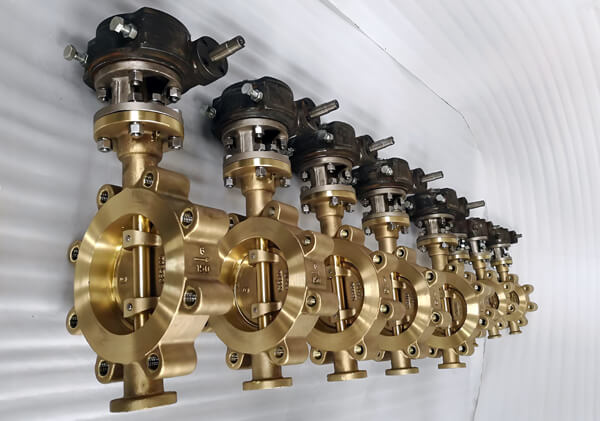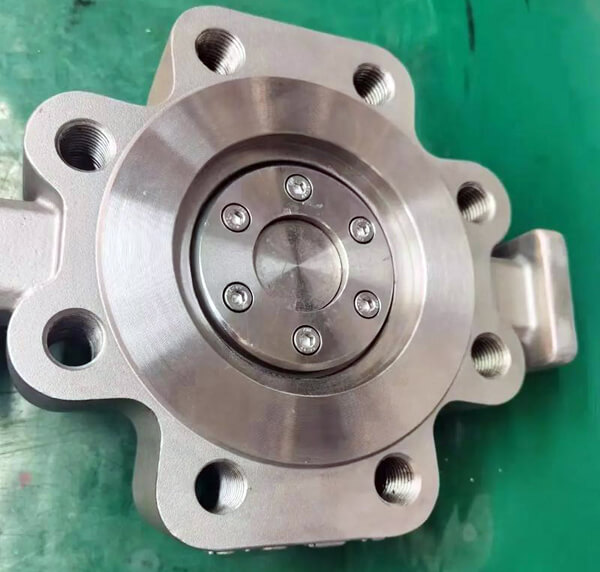What is a Lug Butterfly Valve? Defining the Core Component
At its core, a Lug Butterfly Valve is a quarter-turn rotational motion valve used to isolate or regulate the flow of a medium within a piping system. Its name comes from its most distinctive feature: the integrated threaded lugs (or “ears”) that protrude from the valve’s body around the bolt holes.
Think of these lugs as the built-in, heavy-duty mounting points for the valve. Unlike a wafer valve, which is clamped between two flanges, a lug-style valve uses these lugs to provide independent bolt connections on each side. This allows each pipe flange to be bolted directly to the valve, creating two distinct, separable connections. This fundamental design principle unlocks a level of flexibility and safety that is essential in many industrial settings, making it more than just a simple flow-control device but a strategic component for system design and maintenance.

The Defining Mechanism: How Lug-Style Design Creates Operational Advantages
The magic of the Lug Butterfly Valve lies in its dual-functionality. Because the two sides of the valve are not dependent on a single set of bolts, it enables two critical capabilities:
1. Isolatable System Sections: The most significant benefit. A lug valve can be used as a line-break valve. If you need to service a pump, heat exchanger, or a section of piping downstream, you can simply close the lug valve, unbolt the downstream flange, and remove the equipment. The upstream side remains securely sealed and pressurized by the valve, eliminating the need to drain the entire system. This is a massive win for operational efficiency and safety.
2. Dead-End Service Capability: A lug valve can be installed at the end of a pipeline to act as a blind flange or a drain point. This is a function that a standard wafer valve simply cannot perform, as it relies on the pressure from both flanges to maintain its seat seal.
Lug vs. Wafer Butterfly Valves: An Engineer’s Perspective on Selection
While both are Butterfly Valves, the choice between lug and wafer is not trivial; it’s a fundamental decision based on application requirements. Here is a practical comparison to guide your selection:
Feature |
Lug Butterfly Valve |
Wafer Butterfly Valve |
|---|---|---|
| Installation & Function | Bolts through threaded lugs on each flange. Allows for end-of-line service and system isolation. | Sits between two flanges; bolts pass through both flanges and the valve. Serves as a pure isolation valve in the line. |
| Maintenance | Enables partial system maintenance without full shutdown. | Requires the entire line to be depressurized and drained for removal. |
| Structural Integrity | Generally more robust; the lug design provides better resistance to pipe stress and vibration. | Relies entirely on the flange connection for structural support. |
| Cost & Weight | Typically higher in cost and weight due to more material. | More economical and lightweight. |
| Best For | Maintenance-heavy systems, end-of-line applications, high-vibration environments, and critical safety isolation points. | Cost-sensitive projects, compact spaces where weight is a concern, and systems where full shutdown for maintenance is acceptable. |
The Top 5 Advantages of Choosing a Lug Style Butterfly Valve
Moving beyond basic function, here are the strategic advantages that make the lug valve an indispensable asset in industrial applications.
1. Unmatched Maintenance Efficiency and Enhanced Safety
The ability to isolate a single section of a pipeline transforms maintenance workflows. It drastically reduces system downtime, as only a small portion needs to be taken offline. From a safety standpoint, it protects maintenance personnel by ensuring that the upstream section remains securely sealed, mitigating the risk of accidental pressure release.
2. Superior Structural Integrity for Demanding Systems
The lug body is inherently more rigid than a wafer body. The added material around the bolt holes provides superior resistance to bending moments and pipe misalignment. In systems with high vibration (e.g., near pumps) or potential for water hammer, this robust construction helps maintain a reliable seal and extends the valve’s service life.
3. Long-Term Operational Economy (Lower Total Cost of Ownership)
While the initial purchase price of a lug valve may be higher than a wafer valve, its long-term value is often greater. The savings generated from reduced maintenance downtime, lower labor costs for repairs, and less frequent replacement due to longer lifespan result in a significantly lower Total Cost of Ownership (TCO). It’s an investment in operational resilience.
4. Unparalleled Installation Versatility
A lug butterfly valve is the “Swiss Army knife” of pipeline valves in terms of placement. It can be used in the middle of a line just like a wafer valve, but its unique design also allows it to function at the end of a line or in systems where one side may need to be disconnected regularly. This flexibility simplifies system design and inventory, as one valve type can serve multiple roles.
5. Robust Performance Across Diverse Industries
The combination of safety, durability, and versatility makes the lug style the valve of choice in numerous critical industries:
• Water & Wastewater: Ideal for isolation around pumps and filters for maintenance.
• HVAC: Used in main supply and return lines, and for balancing and draining systems.
• Chemical Processing: Suitable for handling various chemicals where safe isolation is paramount.
• Power Generation: Applied in cooling water systems and other auxiliary services requiring reliable isolation.
Selecting the Right Valve: A Practical Checklist
Ask yourself these questions to determine if a lug butterfly valve is the right choice for your application:
• Does my maintenance plan require working on a section of pipe without shutting down the entire system? (If YES, choose Lug)
• Is the valve needed for a dead-end or blank-off application? (If YES, choose Lug)
• Is the piping system subject to significant vibration, pressure surges, or potential misalignment? (If YES, Lug is generally more robust)
• Is initial purchase price the absolute primary driver, and is a full system shutdown for valve maintenance acceptable? (If YES, a Wafer valve may suffice)
By understanding the fundamental “what” and “why” behind the lug butterfly valve, you can move beyond a simple component selection and make a strategic decision that enhances the safety, efficiency, and reliability of your entire operation.

Post time: Sep-30-2025






